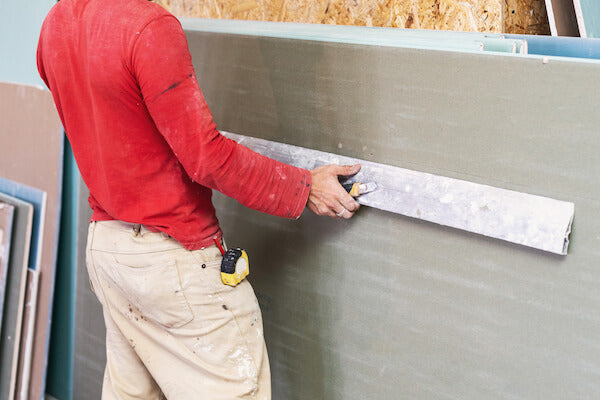
Drywall Hazards - Drywall Health Hazards
What are the hazards associated with drywall work? Here's a good start:
- Manual lifting / back injury hazards
- Respirable silica exposure
- Falls from ladders
- Cuts and abrasions from hand and power tool use
- Slips, trips, and falls on same level
Drywall Stilts Safety
Using stilts for drywall installation is very common in the industry. In fact, it speeds up the installation and finishing process dramatically, so it's unreasonable to not use stilts. The hazards are pretty obvious though. These include falls, uneven surfaces, objects and materials obstructing walking surface, overhead hazards, and more. The best way to use stilts in a safe manner is to read the manufacturers' recommendations on set up and use of stilts since different manufacturers have different features built into their equipment.
Drywall Dust Health Hazards
Drywall dust (including silica dust) is high on OSHA's agenda recently, and for good reason. Respiratory hazards are not always recognized as a hazard at first because symptoms do not occur right away. For this reason, respirators should always be kept on hand and used, especially in confined areas where dust is highly concentrated.
JSA for Drywall Installation
A job hazard analysis is a process that is commonly used to identify and correct hazards related to a particular process or procedure. Most drywall safety manuals or programs will come with a JSA or JHA as part of the document.
Drywall Safety Manual
A drywall safety manual should outline basic policies, programs, and procedures for your drywall company. In addition to this, the manual should be simple enough to read and understand by employees, but complete enough to address the real safety issues related to your company and the drywall trade. Our
drywall safety manual does a good job of this. OSHA has prioritized silica dust as high on the agenda. Further reading from OSHA on this can be found here:
https://www.osha.gov/silica/factsheets/OSHA_FS-3681_Silica_Construction.v2.html.
